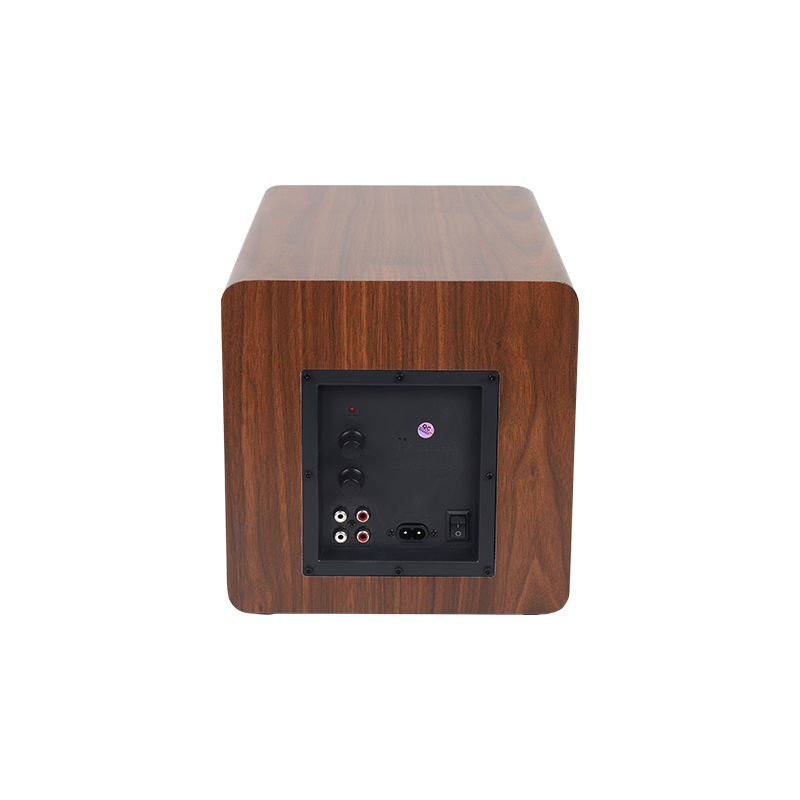The Federal Trade Commission of the United States stipulated the power calibration standard in 1974: drive an 8 Ω loudspeaker load with two sound channels, and the effective wattage measured when the harmonic distortion is less than 1% in the range of 20~20000Hz is the output power of the amplifier, and its marked power is the rated output power. In order to cater to consumers' psychology, businesses usually mark the instantaneous (peak) power, which is generally about 8 times of the rated power.
The power of the speaker is not as high as possible, and the application is the best. For a room of about 20 square meters for ordinary household users, the real power is 60W (the effective output power of the speaker is 30W × 2) It is enough, but the larger the reserve power of the power amplifier, the better. It is better to be more than twice the actual output power. For example, if the speaker output is 30W, the power amplifier capacity is better than 60W. For HiFi system, the power amplifier driving the speaker is very large.
2. Frequency range and frequency response
Frequency range: refers to the range between the lowest effective playback frequency and the highest effective playback frequency that can be replayed by the audio system;
Frequency response: refers to the phenomenon that when an audio signal output at a constant voltage is connected to the system, the sound pressure generated by the speaker increases or attenuates with the change of frequency, and the phase changes with the frequency. This change relationship (change amount) of sound pressure and phase with frequency is called frequency response, in decibels (dB).
2. Frequency range and frequency response
Frequency range: refers to the range between the lowest effective playback frequency and the highest effective playback frequency that can be replayed by the audio system;
Frequency response: refers to the phenomenon that when an audio signal output at a constant voltage is connected to the system, the sound pressure generated by the speaker increases or attenuates with the change of frequency, and the phase changes with the frequency. This change relationship (change amount) of sound pressure and phase with frequency is called frequency response, in decibels (dB).

The frequency characteristics of audio systems are usually described by the frequency response curves of the vertical coordinate of the decibel scale representing the power and the horizontal coordinate of the logarithmic scale representing the frequency. When the sound power is 3dB lower than the normal power, this power point is called the high-frequency cutoff point and low-frequency cutoff point of the frequency response. The frequency between the high-frequency cut-off point and the low-frequency cut-off point is the frequency response of the equipment; The curve of sound pressure and phase lag changing with frequency is called "amplitude frequency characteristic" and "phase frequency characteristic" respectively, and collectively called "frequency characteristic". This is an important indicator to evaluate the performance of speakers. It has a direct relationship with the performance and price of speakers. The higher the decibel value, the flatter the frequency response curve, the smaller the distortion, and the higher the performance. For example, the frequency response of the speaker is 60Hz~18kHz+/- 3dB. Sometimes these two concepts are not distinguished, so they are called frequency response.
Theoretically, the frequency response of 20~20000Hz is sufficient. The sound below 20Hz can not be heard but can be detected by other human sensory organs, that is, the so-called bass force can be felt. Therefore, in order to perfectly play various musical instruments and language signals, the amplifier must achieve the high fidelity goal to reproduce all harmonics of the tone. Therefore, the frequency band of the amplifier shall be extended to the lower limit below 20Hz and the upper limit above 20000Hz. The frequency response of signal sources (radio head, recording stand, CD player, etc.) is expressed differently. For example, the frequency response of FM stereo broadcasting specified by the European Broadcasting Union is+/- 2dB at 40 ~ 15000Hz, and the minimum frequency response index specified by the International Electrotechnical Commission for the recording stand is+/- 2.5+/- 4.5dB at 40 ~ 12500Hz (ordinary band), which is obviously higher than this value. The upper limit of the CD player's frequency response is 20000Hz, and the low frequency end can be very low, only a few Hertz, which is one of the reasons for the CD player's good playback quality.